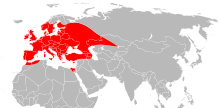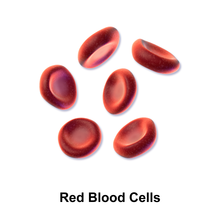Coltivirus
Coltivirus is a genus of viruses (belonging to the Reoviridae family) that infects vertebrates and invertebrates. It includes the causative agent of Colorado tick fever.[2] Colorado tick fever virus can cause a fever, chills, headache, photophobia, myalgia, arthralgia, and lethargy. Children, in particular, may develop a hemorrhagic disease. Leukopenia with both lymphocytes and neutrophils is very common for Colorado tick fever virus. In either case, the infection can lead to encephalitis or meningitis.[3]
Coltivirus is a genus of viruses. Viruses are intracellular parasites that do not have the necessary means to reproduce on their own, so they have instead to hijack the machinery of a host cell. Only then can they synthesize their viral proteins and create progeny. There are two types of viruses, distinguished by their type of genetic material.
DNA viruses have genomes consisting of deoxyribonucleic acid (or DNA), while RNA viruses, like Coltivirus, have an RNA (ribonucleic acid) genome, which is segmented (multipartite).[4][1]
The name "Coltivirus" is derived from the type species of the genus, the Colorado tick fever virus ("Colorado tick"). Coltivirus is in the family Reoviridae, which contains eight genera. Orthoreovirus, Orbivirus, Coltivirus, Rotavirus, Aquareovirus, Cypovirus, Phytoreovirus, and Fijivirus.[5] Coltivirus and Orbivirus together contain about 109 serotypes, and only four of these cause human disease.[5] Ticks are the main vectors of coltiviruses.[6] Colorado tick fever was originally recorded in the 19th century, and today it is one of the most common tick-borne diseases in the United States.[3]
The European Eyach virus and the Colorado tick fever virus are known relatives due to cognate genes, 55% to 88% of amino acid similarity, and similarities at the microscopic level that cannot be distinguished.[6] To find these similarities, a genome sequence analysis was completed.[7] One theory of how the European Eyach virus is proposed to have come about in Europe is by the migration of lagomorphs from North America over fifty million years ago.[6] Since then, the virus took on some differences, and is now considered its own species of virus. European Eyach virus was isolated in 1976 from Ixodes ricinus ticks in Europe and in 1981 from the same species along with Ixodes ventalloiin 1981.
The Coltivirus virions are about 60-80 nanometers in diameter and are not enveloped, and are generally a spherical shape with icosahedral symmetry. Each virion has two concentric capsid shells surrounding a core of about 50 nanometers in diameter. The surface of the particle is relatively smooth.[7] The virus loses its infectivity when the surrounding fluid becomes acidic, around a pH of three, but is stable when the pH is between seven and eight. It also stops being a threat when the temperature becomes about fifty-five degrees Celsius.[7]






